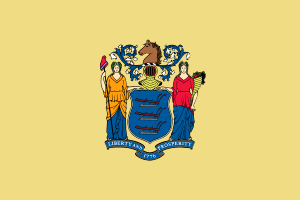Washington Park (baseball)
Coordinates: 40°40′26.3″N 73°59′08.6″W / 40.673972°N 73.985722°W
Washington Park was the name given to three major league Baseball parks on two different sites in the Park Slope neighborhood of Brooklyn, New York, located at Third Street and Fourth Avenue. The first two sites were diagonally opposite each other at that intersection. The third site was the same as the second site.
First park
The first Washington Park was bounded by Third and Fifth Streets, and Fourth and Fifth Avenues. The property contained an old building then called the Gowanus House, which stands today, albeit largely reconstructed. Known today as the Old Stone House, it was used as an impromptu headquarters by General George Washington during the Battle of Long Island, during a delaying action by 400 Maryland troops against approximately 2000 British and Hessian troops that allowed a good portion of the Continental Army to retreat to fortified positions on Brooklyn Heights. Those events inspired the ballpark's name.
The ballpark was the home of the Brooklyn baseball club during 1883–1891, with a slight interruption by a destructive fire during the 1889 season. The team, then called the "Atlantics", had started in a minor league in 1883, joined the then-major American Association in 1884, and then switched to the National League in 1890. Streetcar (trolley) tracks ran near the ballpark, inspiring the one of the team's many nicknames that ultimately stuck: Trolley Dodgers.[1]
In 1891, the team split its time between Washington Park and a newer facility called Eastern Park in Brownsville, moving there full-time in 1892. That might have seemed like a good idea at the time, but the park was a little too "eastern" for the fans' convenience, and was abandoned after six poorly attended seasons.
Second park
The second Washington Park[2] was bounded by First and Third Streets, and Third and Fourth Avenues. It was located at 40°40′30″N 73°59′10″W / 40.67500°N 73.98611°W. The park sat 18,800. It consisted of a covered grandstand behind the infield and uncovered stand down the right field line. The Brooklyn National Leaguers, by then often called the "Superbas" as well as the "Dodgers", moved into this new ballpark in 1898, where they would play for the next 15 seasons. On April 30, 1898, the Dodgers played their first game at new Washington Park and 15,000 fans attended. One of the more unusual features of the Park was the aroma from nearby factories and Gowanus Canal, which was a block away and curled around two sides of the ballpark.[3]
Meanwhile, owner Charlie Ebbets slowly invested in the individual lots on a larger piece of property in Flatbush, which would become the site of Ebbets Field once he had the entire block. So in 1913, the Dodgers, at that time most often called the "Robins" for their manager Wilbert Robinson, abandoned Washington Park.
Third park

The Brooklyn Tip-Tops or "BrookFeds" of the Federal League, the only major league team ever named for a loaf of bread, acquired the ballpark property in 1914, then rebuilt the second Washington Park in steel and concrete. The old park took on a modern appearance; in fact, it was nearly a duplicate of the initial version of another Federal League park in Chicago that would become Wrigley Field. However, with the Dodgers in a new and somewhat more spacious steel-and-concrete home already, Ebbets Field, there was no long-term need for Washington Park, so it was abandoned for the final time after the Federal League ended its two-year run.
Part of the left center field wall of this final Washington Park still stands on the east side of 3rd Avenue, south of 1st Street, as part of a Con Edison yard.[5][6]
Dimensions
(The Second Washington Park between 1st Street and 3rd Street)
- Left Field – 335 ft (1898), 375.95 ft (1908), 300 ft (1914)
- Left Center Field – 500 ft (1898), 443.5 ft (1908)
- Center Field – 445 ft (1898), 424.7 ft (1908), 400 ft (1914)
- Right Center Field – 300 ft (1898)
- Right Field – 215 ft (1898), 295 ft (1899), 301.84 ft (1908), 275 ft (1914)
- Backstop – 90 ft (1898), 15 ft (1908)
Fences
- Left Field to Center Field – 12 ft.
- Right Field – 42 ft (13 ft. brick fence topped by 29 ft. of canvas)
References
- ↑ "History Hilights: 1890s". Los Angeles Dodgers. Retrieved 2006-11-22.
- ↑ Washington Park II at ballparks.com
- ↑ Snyder, John (2010). 365 Oddball Days in Dodgers History. United States: Clerisy Press. p. 384. ISBN 1578604524..
- ↑ Lowry, Philip (2006). Green Cathedrals. Walker & Company. p. 37. ISBN 978-0-8027-1608-8.
- ↑ Martin, Douglas (November 2, 1997). "Last Vestige of the Dodgers in Brooklyn". The New York Times. Retrieved 2010-04-18.
- ↑ "Used to Be a Ballpark Right Here (And Still Is)". Forgotten New York. Retrieved 2010-04-18.
- Green Cathedrals, by Phil Lowry. Society for American Baseball Research (June 1986). ISBN 0-910137-21-8
External links
- Washington Park page from Forgotten NY
- The Battle for New York (2002). A book by Barnet Schecter that includes and excellent study of the Battle of Long Island and the action at what is now this park.
- Ebbets-Field.com
- Brooklyn Ballparks page on Washington Park


